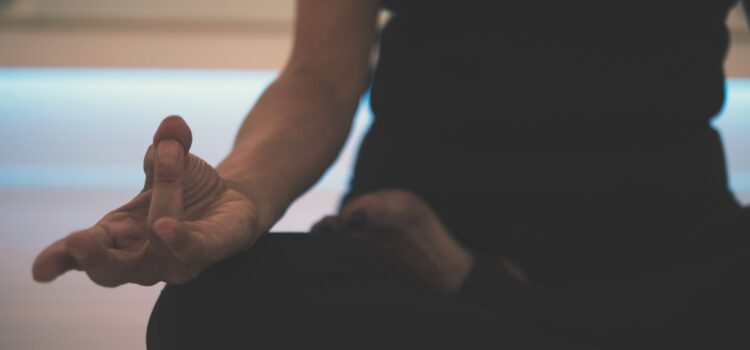

This article is an excerpt from the Shortform book guide to "Eat Pray Love" by Elizabeth Gilbert. Shortform has the world's best summaries and analyses of books you should be reading.
Like this article? Sign up for a free trial here .
What is Vipassana? How does Elizabeth study and practice Vipassana in Eat Pray Love?W
Vipassana, or silent meditation, was one form of study Elizabeth Gilbert undertook during her time at the ashram. She struggled with this practice, but learned from it.
Read more about Elizabeth Gilbert’s study of Vipassana.
No More Running: Turning to Vipassana
The breakthrough with the Geet caused Gilbert to wonder whether her plans for India needed to change. She was coming to the end of her six weeks at the Ashram and had big plans for her journey. She wanted to discover other temples, other holy guides, and other ways of finding God. She wanted to do touristy things like visit the Ganges, the Himalayas, Calcutta, and Mumbai. She wanted to visit the Dali Lama and ask him for help finding God. But all of that changed.
She remembered what she’d learned from the Zen teachings—it’s harder to catch sight of yourself in moving water than still water. Was she really going to find God jumping from one train car to the next and one location to another? Everything at the Ashram was designed to support her spiritual transformation. Richard said she’d been invited by God to jump on her personal train of awakening in a beautiful and safe place. Could she really pass that invitation up by stopping the trip halfway? After that, she made the decision to stay.
Gilbert understood the truth in Richard’s words. Even though she’d had some breakthroughs in her ability to communicate with God, she still hadn’t mastered the art of intentional thought.
Not long after, Gilbert caught herself thinking about her future during mediation. Where would she live after her trip? New York? Somewhere else? If she lived somewhere cheaper, she could afford a two-bedroom apartment. The second room could be dedicated to meditation. What color should it be?
This thought brought her up short. She wasn’t present in the moment. She was meditating on where she would be meditating eight months from now. She tried to bring her focus back to the present, but it was no use. So she decided to try a different type of meditative practice she heard about from another resident—Vipassana.
Vipassana Lessons
Vipassana is the practice of silent meditation for two to three hours at a time. You’re not permitted to move, not even to shift position. The point is to sit with the discomfort, assess it, and let it go. This practice aims to help you sit with discomfort in real life. Gilbert wondered how it might serve her life to be able to sit unmoving for more than a few minutes. She was the type of person who was constantly bouncing from here to there, making quick and rash decisions to avoid pain and discomfort. Was she even capable of being still?
She found a bench in the Ashram’s garden and decided she would practice her own version of Vipassana for one hour. Unfortunately, she chose the time of night when the mosquitoes came out of hiding. They started to assault her, and she questioned whether she shouldn’t try another time. But then it hit her—the buzzing and discomfort of being stung emulated the constant disruptions of daily life. If she could make it through this hour, what else could she make it through?
Rather than focus on the pain, she merely acknowledged it and let it go. She slipped into a meditative state for two hours. When she was finished, she counted 20 bites. They itched, but she just rode with it. After another 30 minutes, she didn’t feel any discomfort at all. For once, she hadn’t rushed to react. It was a small moment of fortitude, but one she’d never experienced before. And she was thrilled.
The Power of Intention
Gilbert continued to grow stronger in her practice of silent meditation and beyond. She’d often prayed in a vague way to God, sometimes even putting the ball in His court to figure out what she needed. But now, she was being more intentional in her prayers. She tried to be as specific as possible in what she asked.
She had grown to see that prayer was a two-way street. God knows what you need, but you must also know. That’s the point. If you don’t know what you want or need, how can you ever hope to achieve it?
Gilbert started to realize that destiny and fate were partly under her purview of responsibility. There were things she couldn’t control in life. But she could control certain things—what she ate, who she let into her life, how she spent her time, and how she used her words. But it was Richard who added her thoughts to the list. He told her that choosing her thoughts was the same as choosing what to have for breakfast.
With this new understanding, Gilbert saw that negative thoughts were part of reality, but what she did with them was her free will. If she was willing to let go of emotional attachments to negative events, she could receive the negative thoughts and send them on their way.
She now saw her mind as a safe harbor and started a new mantra. She would no longer give refuge to unhealthy thoughts. She sent a call out to the universe that the rules surrounding which thoughts would be pulled ashore had changed. There was a new sheriff in town, and he didn’t stand for mayhem.

———End of Preview———
Like what you just read? Read the rest of the world's best book summary and analysis of Elizabeth Gilbert's "Eat Pray Love" at Shortform .
Here's what you'll find in our full Eat Pray Love summary :
- Why Elizabeth Gilbert needed to divorce her husband
- How she was able to find joy again in Italy
- How Gilbert was able to find balance with Felipe






